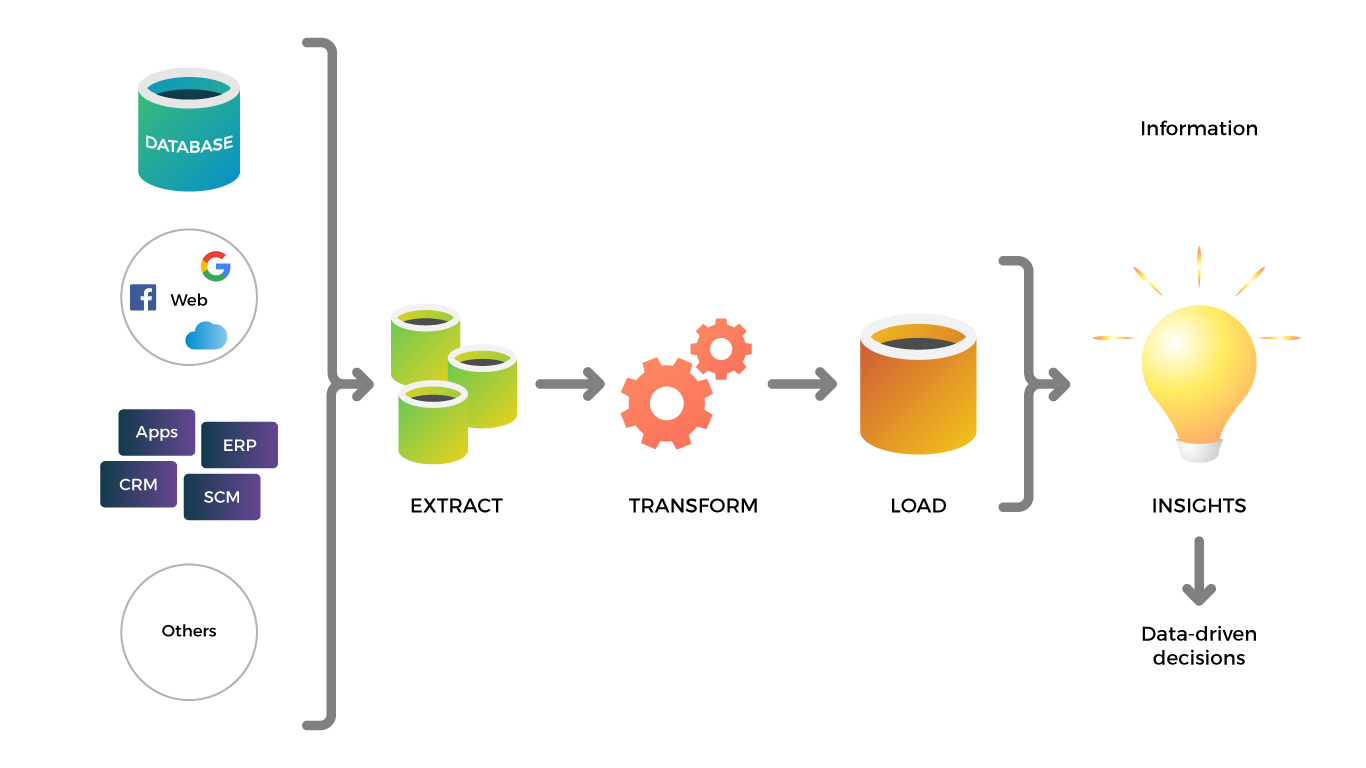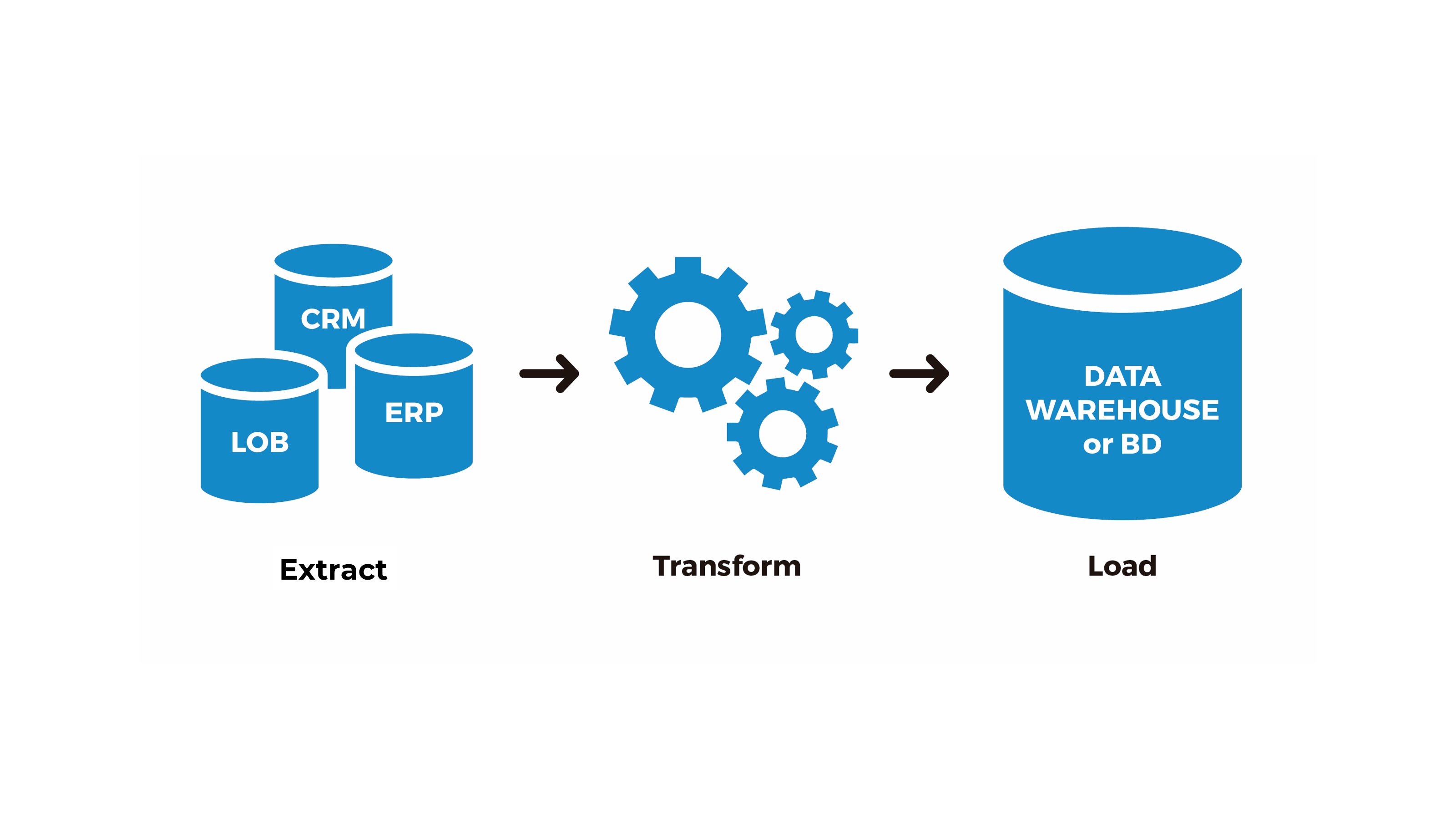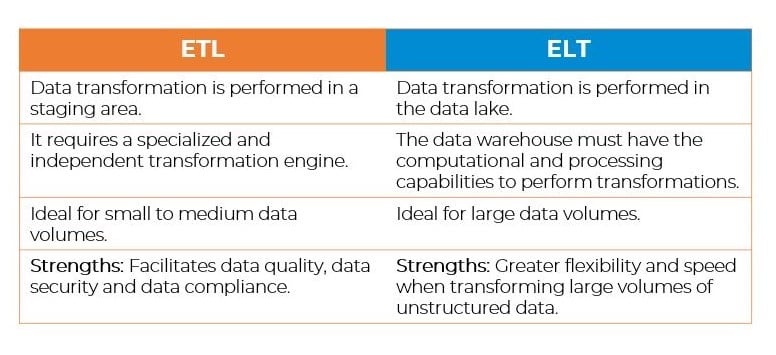We explain how to carry out an enterprise data integration process: ETL, data warehousing, systems integration, etc.
Data integration is a fundamental process in the area of information management. As the amount and variety of data generated by organizations has increased exponentially, unifying and consolidating information spread across different sources and in different formats has become essential. Carrying out an efficient data integration process requires multiple processes to ensure the compatibility, integrity and security of the data.

Data integration has become critical for the development of a data-driven culture that enables organizations to make the most of their data and build a solid information base for better decision making.
Companies have large amounts of data in different formats and stored in different systems. Without data integration, data assets cannot be brought together to be analyzed. To put this in perspective, prior to a data integration process, it is af is data was spread across different countries and each data asset spoke a different language. Data integration is what brings all the data assets together in one place and teaches them a common language so that they can communicate with each other.
Ultimately, data integration is the core process that enables companies to leverage data from multiple sources, make it accessible and prepare it for transformation into information and insights regardless of its format, origin or nature. In this sense, data integration also requires interoperability and system integration.
A data integration process also covers the processing and transformation of data from different systems, databases and applications. The ultimate goal of the process is for companies to obtain a complete and coherent view of the information they have.
In a highly competitive business environment geared towards digital transformation, data integration has become a key factor in achieving competitive advantage and making the most of the potential of available data.
What is data integration?
Data integration is a process that combines data from multiple sources to provide a unified and standardized view of data. This helps to consolidate different types of data, considering their growth, volume and formats, and bring them together in a single data repository —usually a data warehouse—, so that all members within the organization can have access to the data they need.
Incompatibility between data formats is one of the major handicaps that prevent companies from taking advantage of the information they have and transforming it into business intelligence.
Leveraging data, regardless of its type, structure or volume, allows companies to make more accurate, effective and, of course, informed data-driven decisions.
Data integration is a major process within a data pipeline, which includes data integration and data ingestion, data processing, transformation and storage, among other possible processes needed to meet specific needs.
How does data integration work?
Understanding how data integration works is critical to appreciate its benefits.
As businesses become increasingly reliant on their data assets, having a single point of access for data storage, access, availability and quality is becoming more complex.
 One of the most common data integration processes is ETL, which involves three steps: Extraction of the data, Transformation and Loading it into a data repository, typically an Enterprise Data Warehouse (EDW).
One of the most common data integration processes is ETL, which involves three steps: Extraction of the data, Transformation and Loading it into a data repository, typically an Enterprise Data Warehouse (EDW).
In recent years, some companies are beginning to approach the ETL process from another perspective: ELT, which inverts the order of Transform and Load to optimize and speed up the process.

Beyond ingestion, transformation and loading, data integration processes can also include cleaning, sorting, enrichment and other additional processes that prepare the data for its use. An efficient data integration strategy must also address data governance and data quality policies.
The great challenges of data integration
Enterprise ecosystems tend to have large amounts of data from various sources and frameworks, often disorganized, unlabeled, inaccessible or inaccurate. In addition, changes in the infrastructure of corporate tools are frequent, which can further challenge enterprises when integrating their data.
Each corporate environment and data architecture is different and therefore the challenges an organization may face when implementing a data integration process may vary. However, the most common obstacles related to data integration are:
- Búsqueda ineficiente de datos: La incapacidad de encontrar rápidamente los datos necesarios puede limitar la capacidad de crear estrategias de éxito, lo que reduce la productividad.
- Incompatibilidad entre sistemas: La incompatibilidad entre los sistemas y/o herramientas corporativas puede complicar y ralentizar el proceso de integración.
- Datos obsoletos o de baja calidad: La acumulación de datos sin estándares para su entrada y mantenimiento puede resultar en datos inexactos, obsoletos, duplicados e insuficientes.
- Dependencia de otras aplicaciones para acceder a los datos: Los datos acoplados a otras aplicaciones, especialmente aplicaciones heredadas, pueden dificultar su uso en otros lugares.
- Formatos y orígenes de datos dispares: Las diferentes aplicaciones utilizadas por los equipos pueden generar diferentes formatos de datos, lo que puede provocar la desalineación de los datos. Por este motivo, en un proceso de integración de datos, los datos se transforman y consolidan.
- Sobrecarga de datos: La falta de un plan para administrar la cantidad de datos recopilados puede provocar que se acumule información que no sea necesaria, desplazando a la información realmente importante.
- Inefficient data queries: The inability to quickly find needed data can limit the ability to create successful strategies, reducing productivity.
- Incompatibility between systems: Incompatibility between corporate systems and/or tools can complicate and slow the integration process.
- Obsolete or poor quality data: Accumulation of data without standards for data entry and maintenance can result in inaccurate, outdated, duplicate and insufficient data.
- Dependence on other applications to access data: Data coupled to other applications, especially legacy applications, can make it difficult to use elsewhere.
- Disparate data formats and sources: Different applications used by teams can generate different data formats, which can lead to data misalignment. For this reason, in a data integration process, data is transformed and consolidated.
- Data overload: The lack of a plan to manage the amount of data collected can cause information to accumulate that is not needed, making important information invisible.
What do we do? Data Integration
A data integration process can be approached from different perspectives depending on the company's needs, size and available resources.
Our experience in ETL processes, data quality processes, master data management and data governance acquired in numerous data warehousing projects in companies from different sectors, allows us to successfully solve the most significant data integration challenges.
As a preferred Microsoft Power BI partner, at Bismart we work with the leading data integration technologies in the market. We are also lucky to have a multidisciplinary team with expertise in multiple technologies and integration software. This allows us to approach data integration from a flexible perspective to design the right data architecture for each organization.
- Our specialty resides in building a specific data architecture for each use case, designing the data flow that best suits each company's specific needs.
How do we do it?
- Data integration between systems: we transfer data between the systems involved in the business processes, ensuring the integrity of the information, carrying out the necessary transformations and aggregations and applying the latest quality and data governance criteria.
- Master data management: we consolidate and standardize master data in a single system so that they can be exploited by different systems.
- Data Governance: We manage the entire information lifecycle based on a metadata architecture and powerful dashboards.
- Data quality: We guarantee data quality, ensuring its accuracy, relevance and integrity. Above all, we ensure that the data meets the quality requirements for its intended use.
- Transforming data into business value: Our specialty is to convert data into strategic and valuable information for companies, providing business insights that drive process optimization, more effective decision making, increased productivity and the design of more robust strategies.
The standards of our data integration processes:
-
Simplification : We minimize the efforts required for the integration of information between systems, facilitating and accelerating the process.
-
Data standardization and integrity: We ensure standardization both of data and databases, ensuring the consistency and quality of the integrated information.
-
Master data management: We simplify the management and reuse of master data and other reference information, optimizing its use in different contexts.
-
A single platform: We provide complete control over integration processes on a single platform, enabling centralized and efficient management.
-
Self-documentation based on metadata: By facilitating the comprehension and tracking of integration processes through metadata-driven self-documentation.
-
Data compliance: We ensure compliance with current data privacy regulations, including GDPR, ensuring the security and privacy of information.



